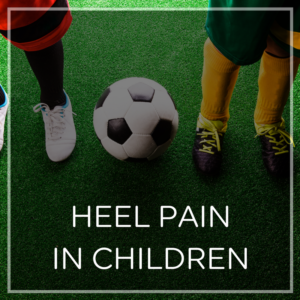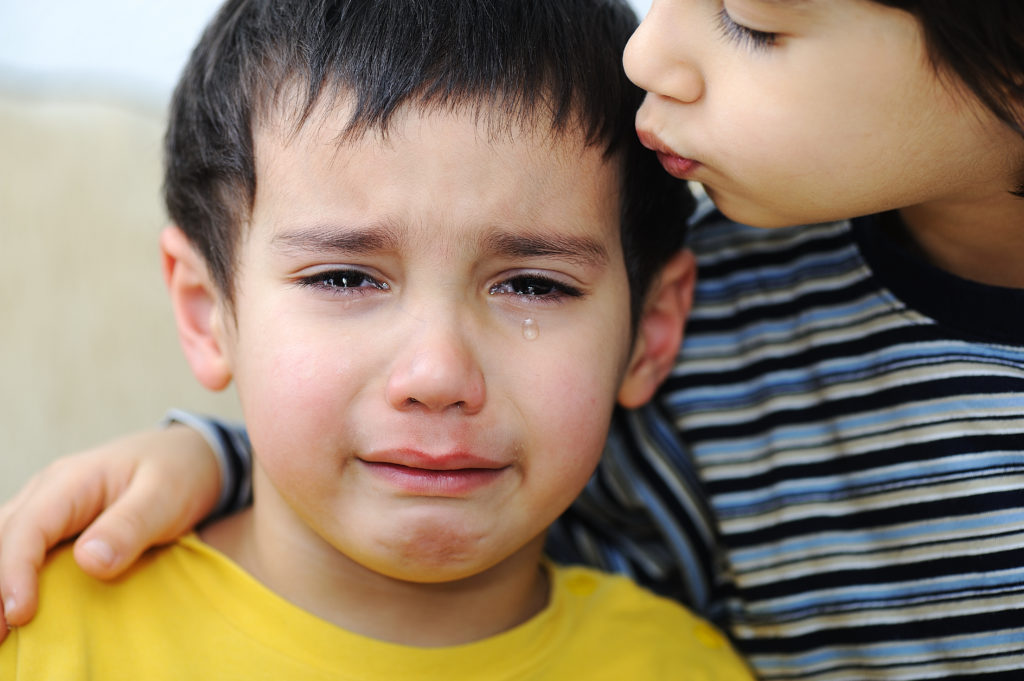 While we usually associate foot and heel pain with getting older, children can suffer from heel pain too.
While we usually associate foot and heel pain with getting older, children can suffer from heel pain too.
And prompt, effective treatment is more important than ever for a growing, active child.
However, unlike adults, children may not communicate their symptoms in a way that leads you to quickly identify the problem and begin treatment.
Being aware of the common causes of heel pain in children, how those conditions may manifest themselves, effective treatments, and signs you should visit a doctor are very important for keeping your child healthy and active.
Common Causes of Heel Pain in Children
While the list below isn’t exhaustive, the following are the most common causes of heel pain in children:
Severs Disease
Severs Disease is a serious condition that causes heel pain, and is often mistaken for “growing pains.” It’s caused by the fact that a child’s heel bones grow slower than the rest of the ligaments in the legs. When the heel bone goes through a growth spurt, but the rest of the feet and legs are struggling to catch up, the result can be significant heel pain that needs medical attention right away. The condition manifests as limping, difficulty walking, swelling and redness, and intense pain.
Overuse
Kids can have seemingly endless amounts of energy–but the ligaments and muscles in their heels and feet are still susceptible to injury and wear through overuse. When too many sports practices happen back-to-back, or kids engage in physical activity in intense spurts without much warm-up, the muscles and ligaments in the foot may not be able to rest and recover from micro-injuries and wear, resulting in a compounding effect and eventual injury.
Sports

Sports are one of the most common causes of heel and foot injury for children. Any activity that involves running, jumping, or rapid changes in movement and direction puts significant strain on the arch and heels. When kids engage in sports without supportive footwear, or fail to warm up the muscles in the feet and legs properly, injury to the feet and heels is highly likely.
Stress Fractures
Whether kids play sports or not, most are on the go constantly as they explore and play. Tumbles, falls, and jumps on hard or uneven surfaces can result in stress fractures to the heel or bones in the foot. Stress fractures aren’t a complete break, of the bone, but rather tiny, painful fissures in the bone that require immediate treatment.
Plantar Fasciitis
Plantar fasciitis is the result of inflammation and damage to the arch of the foot, and causes pain in the heel and foot while walking, especially first thing in the morning. Plantar fasciitis can have many causes, but high-impact sports, overuse, and improperly fitting shoes are major culprits for kids.
Improperly Fitting Shoes
Poorly fitting shoes can result in a host of heel and foot problems for kids. Because children’s feet grow so quickly, it’s easy for shoes to become too tight in the heel or toe box. And because many children are very active, shoes often wear out more quickly than their adult counterparts, resulting in poor arch and heel support.
Symptoms of Heel Pain in Children

When children experience heel or foot pain–especially in the early stages, they may not articulate it to you, or may talk about it in vague terms. Keep an eye out for the following, so that you can address heel or foot issues early, before they become more serious:
- Complaints about shoes being too tight, or “old” may indicate footwear that’s no longer supportive, worn out, or putting too much pressure on the toes or heel
- Limping, which may be an indication of Severs Disease and should be treated right away
- Intuitively stretching or massaging the heels and feet
- Complaints of stiffness or “prickles” in the feet or heels, especially first thing in the morning
- Changes in physical activity level
- Complaints of “feeling like there is something in their shoe” even when there is nothing to be found in the shoe
- Changes in the way your child plays sports or runs/walks/jumps as they play. Look for any changes in gait, or signs that your child appears to favor their feet
Safe Heel Pain Treatments for Kids
Most of the time, heel pain in children can be treated effectively and safely at home, without the risk of ongoing or permanent damage:
Stretching
Stretching not only helps warm up and increase flexibility in the heels and feet–it also improves their strength and resilience. Strong, flexible ligaments and muscles in the feet and legs are far less likely to be injured or strained. A weak or injured arch can become healthier and stronger through consistent daily stretching.
Icing
Ice can be very helpful in reducing pain and inflammation in injured or strained heels and feet. Ice for 10-15 minutes at a time, shielding the skin from direct contact with the ice using a washcloth, plastic bag, or ice slipper.
Orthotics
Older kids and teens can fortify their shoes with orthotics to help the arch of the foot distribute and withstand the impact of play and sports. Orthotics raise the arch of the foot to an optimal height, and provide important support and cushioning.
Rest
Rest is a simple yet very important component to healing. For an active kid, this can be extremely difficult, but it’s important to help your child spend plenty of time resting their feet and heel, avoiding high impact activities, and allowing complete and proper healing take place.
When Should You Visit a Doctor?
As a rule of thumb, your child should see a doctor for heel or foot pain that is persistent, severe or comes on very suddenly. If your child is limping or having trouble walking, it’s a good idea to stay on the safe side and see a physician. When in doubt, or if you suspect Severs Disease, be sure to talk to your doctor.
While it’s true that children have small feet, they deserve just as much attention and care as big feet! By knowing which symptoms to watch for, when to visit a doctor, and which conditions are most likely to strike children and cause heel pain, you can help keep your kids’ feet healthy and strong.




I have had heel pain for 5 months and wore a walking boot for four. It hasn’t gotten better what should I do?
Go to your doctor.